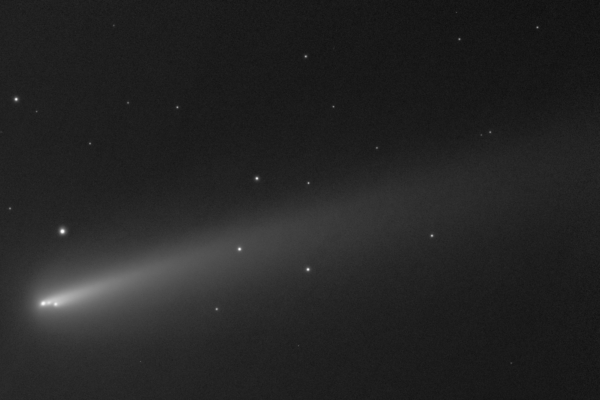The “ATLAS” comet C/2025 K1 (ATLAS) from the outer edge of the solar system’s Oort Cloud recently experienced a spectacular explosive disintegration upon reaching perihelion.
Austrian astrophotographer Michael Jäger released a time-lapse animation showcasing the rare sight of the comet breaking apart into multiple fragments for the first time.
Click here to watch the related video.
This comet, known for its rare golden glow emitted by its coma and tail, was dubbed “Another ATLAS” in the astronomical community. It shares the name with the recently highly scrutinized interstellar object 3I/ATLAS, but the two are only detected by the same observation network – the Asteroid Terrestrial-impact Last Alert System (ATLAS) – with no substantive connection between them.
C/2025 K1 was discovered by the ATLAS telescope network in May of this year. The comet reached perihelion on October 8, coming within about 50 million kilometers of the Sun.
Astronomers had predicted that the close flyby of the Sun would exert enormous gravitational pressure on the comet’s fragile structure. Despite appearing unscathed in October, on November 13, following a sudden surge in brightness, the comet’s structure collapsed, eventually disintegrating.
Jäger’s time-lapse animation recorded the comet initially splitting into three main fragments, followed by a smaller fourth piece breaking off. These fragments slowly drifted apart in space, presenting viewers with a unique “dance of death” scene.
Researchers had hoped to conduct more in-depth observations of the comet as it came closest to Earth on November 25. However, the comet’s disintegration made this plan difficult to realize. Nonetheless, observers with high-performance telescopes still have the opportunity to capture these comet fragments in the constellation Leo.
The ability of C/2025 K1 to emit a special golden glow is closely related to its extremely rare chemical composition, providing valuable clues for researching the composition of comets beyond the solar system.
A research report from the Lowell Observatory in Arizona indicated that the comet’s nucleus severely lacks common carbon molecules found in typical comets, such as cyanides and carbon monoxide. It is this absence of chemical substances that results in its unique golden glow.
Among known comets, the extremely low carbon content of C/2025 K1 is exceptionally rare, granting it high scientific research value.
In comparison to C/2025 K1 from the inner Oort Cloud of the solar system, another comet from a star system outside the solar system, 3I/ATLAS, successfully reached perihelion on October 29 and is currently flying out of the solar system with a stable structure.
(This article references reports from Live Science, Spaceweather.com, and astronomical observation data)

